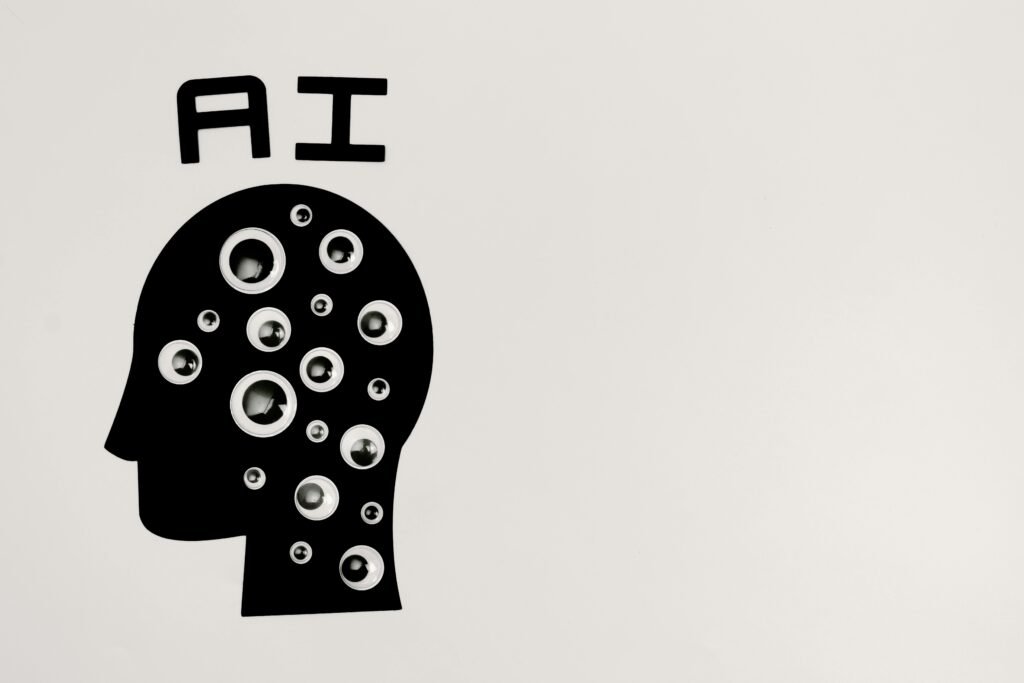
Artificial intelligence has crossed the timeline from being something you might find in science fiction into a revolutionary force in the 21st century. It is now beyond any freakish vigor or futuristic fancy. It is real and definitely encroaching into the miniature bits of our daily living- from the suggestions popping up on streaming platforms, to the self-driving car being tested on our roads. Time an article set about diving deep into understanding the scope of artificial systems, defining and explaining AI and how it works.
1. Defining Artificial Intelligence: A Multinational Concept:
At the core of this definition is the development of intelligent agents-systems that perceive their environments, learn from experience, reason, and act to attain certain goals. This implies that this broad definition encompasses a wide array of technologies and approaches, making it difficult to arrive at a standard universally accepted definition.
- In summary, here are the key points that one should understand about artificial intelligence in starting up an exhibition:
- Mimicking Human Intelligence: AI tries to imitate cognitive functions related to human thinking: learning, problem-solving, decision-making, understanding language.
- Learning from Data: Researchers feed data into AI systems, which progressively improve using automatic identification of patterns and relations within small, large, and very large data sets for predictions and classifications.
- Automation of Tasks: AI takes over tasks that were previously accomplished by human intelligence: among those are image recognition, natural language processing, and fraud detection.
- Continuously Learning: AI systems are designed to learn and keep getting better with experience, so their performance and accuracy increase as they are faced with new data and otherwise identical tasks.
- seemore:
2. Key Subfields of Artificial Intelligence

- Machine Learning (ML): This subfield features algorithms that train the computer to learn from the data instead of honing such functions fully through explicit programming.
- Supervised Learning: It is the obtaining of training the model using labeled data, where the algorithm learns to map inputs to outputs based on known examples.
- Regression: Provides for the prediction of continuous values (e.g., stock prices, temperature).
- Classification: Categorizing data into discrete classes (e.g., spam detection and image recognition).
- Unsupervised Learning: Involves the processing of unlabeled data. In this case, the algorithm finds hidden patterns and structures within the data.
- Clustering: Grouped similar data points together (e.g., customer segmentation).
- Dimensionality Reduction: Reducing the number of features in a dataset while preserving essential information.
- Reinforcement Learning: Training agents to perform anything in nonused interactions within a dynamic environment to maximize the expected reward.
- Deep Learning (DL): Subset of machine learning, it applies artificial neural networks with many layers (deep neural networks) to extract complicated features from data.
- Convolutional Neural Networks (CNNs): Great in image and video analysis.
- Recurrent Neural Networks (RNNs): Process sequential data such as text and time series.
- Generative Adversarial Networks (GANws): Generate synthetic data that resemble real data.
- Natural Language Processing (NLP): Intelligence used to understand, interpret, and generate human language.
- Sentiment Analysis: The study of the sentiment of the sentence (positive, negative, neutral).
- Machine Translation: Text is translated from one language to another.
- Chatbots: Engage in a conversation with humans.
- Computer Vision: The ability for computers to visualize or see and understand images and videos.
- Object Detection: Identifying and locating objects in images.
- Image Segmentation: Dividing an image into different segments or objects.
- Facial Recognition: Recognition and identification of a person from the images or videos.
3. Exploring the Workings of AI Further
All of these AI systems are meant to employ algorithms; i.e., a set of rules and instructions that guide a computer in carrying out a task. These algorithms will undergo data acquisition and preparation to gather knowledge from data that is quite extensive in volume. Acquiring data from different sources, cleaning the data to remove errors and inconsistencies, and finally changing it into any format the algorithm requires.
Feature engineering: conversion as many raw features, sometimes selection, extraction, or transformation of useful information out of the data into features expressed in a much more accessible manner for the AI model.
Model selecting and training: selection of the algorithm needs to be based upon the problem being solved and the nature of the data available. A model will be trained from this data, and this training will consist of internal parameter adjustment with the explicit aim of minimizing error and maximizing performance. This whole cycle is an iterative series of adjustments and refinements.
Evaluation and refinement: Once the training is complete, performance evaluation comes next. The performance of the model should, hence, be evaluated by some proper metric. However, if the performance isn’t acceptable yet, there is more refinement: hyper parameter tuning or more data collection.
Deployment and Maintenance: The trained model is then deployed to operate in a production environment, where predictions or decisions can be made for real-world applications; one important aspect is that it is continuously and effectively maintained so that the model continues to work accurately through time, which may change due to changing data patterns and conditions of its environment.
4. Key Concepts in AI
4.1 Machine Learning Algorithms:
- Decision Trees: Model decisions and possible effects in a tree-like manner.
- Support Vector Machine (SVM): Method used to create the best hyperplane to separate different classes of data.
- Neural Networks: A computer system with interconnected nodes inspired by the working of a human brain.

4.2 Data Representation:
- Vectors: An array of coordinates that represent one point in a given space.
- Tensors: Multidimensional arrays or vectors that represent complex data structures.

4.3 Bias and Variance:
- Bias: The average error on the data set.
- Variance: Model’s sensitivity to fluctuations in the training data.
4.4 Overfitting and Under fitting
- Overfitting: When a model performs exceedingly well on training data and poorly on new and unseen data.
- Under fitting: Anti-pattern of model construction whereby the model is too simple to explain the underlying data patterns.
5. Real-World Applications of AI
AI is taking over various industries with many subtle aspects of our daily lives.
5.1 Health:
- Disease Diagnosis: Complex AI systems analyze X-rays, MRIs, etc., in diagnosing diseases in the medical field.
- Drug Discovery: AI accelerates drug discovery by analyzing a mountain of data to identify potential new drug candidates.
- Personalized Medicine: Algorithms used to analyze patients’ individual data to modify treatment plans.

5.2 Finance:
- Fraud Detection: AI algorithms detect fraudulent behavior in real-time.
- Algorithmic Trading: AI algorithms execute trades automatically based on market data.
- Credit Scoring: AI improves the accuracy of the assessments of creditworthiness.

5,3Autonomous Vehicles:
- Self-driving Cars: AI systems perceive their environment, make driving choices, and drive themselves.
- Autonomous Drones: They are used for various applications, delivery, reconnaissance, and agriculture.

5.4 Customer Service:
- Chat gpt: Automatically answer customer questions and provide online assistance instantly to resolve frequently asked questions through AI systems.
- Personalized Recommendations: A recommended product often leads to a purchase based on the profile of buying by an AI algorithm.
5.5 Entertainment:
- Content Recommendation: Content streaming sites like Netflix use AI to recommend motion pictures, series, and music.
- Special Effects: AI is used to create realistic special effects in movies and video games.
6. Ethical Considerations and Challenges
Speaking generally, with dizzying speed, the ability of artificial intelligence raises a very large
number of ethical and societal issues:
Job Losses: Automation based on artificially intelligent controls may be responsible for some job loss in many domains.
Bias and fairness: AI systems exhibit inconsistencies and weaknesses in logic that can effectively reproduce and amplify biases reflected within the definitions on which such system operate.
Privacy Ever-Widening: Gathering and utilizing astonishingly large datasets creates quite a challenge when it comes to the issue of privacy.
Transparency and Explain ability: Many AI models are muddled and steeped in opacity, rendering understanding of how exactly they make decisions virtually impossible.
Intensified Safeguards and Security: Indeed, AI has brought with it its own risks, such as misuse for deep fakes creation or for autonomous weapons development-all of which can in some way bring worrisome results for human’s independence.
7. The Future of AI
The future of AI offers great hope. More research and development will probably lead to such things as:
Powerful-Sleek AI UI: Hardware, algorithms, and data availability come one step closer to the next heights in terms of AI installation.
Listed with Various AI Applications: Instead of remaining separated because of the distance, AI will be included in various aspects of homes, workplaces, transportation, and even in healthcare.
Constant Depictions-A discovery of possibilities for a few-even many- from Science Breath research medicine, climate change, and environmental protection to mention a few.

Conclusion
Today, indeed, this is artificial intelligence in the growing flash of technology that drives forth many changes in the world. While grasping the essential basis, Core concepts, algorithms, and models of AI, one is able to come up with the power of AI for good or weak, destroying the moral and ethical problems addressed today by society. It is imperative that nurtured development advances with appropriate responsibility, it will be transparent, and AI will give full access to the whole of humanity in its list.
morehttps://hananfa.com/e-commerce-and-online-marketplaces-a-guidelines/ us:
